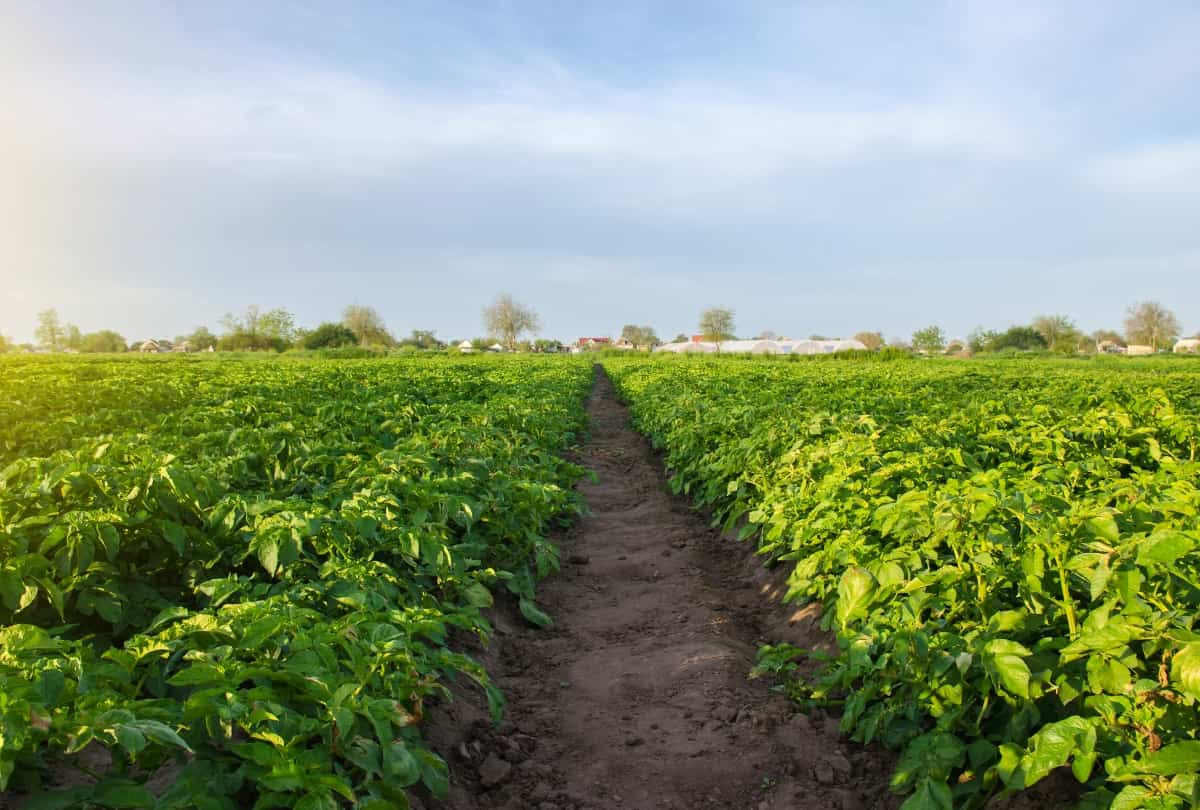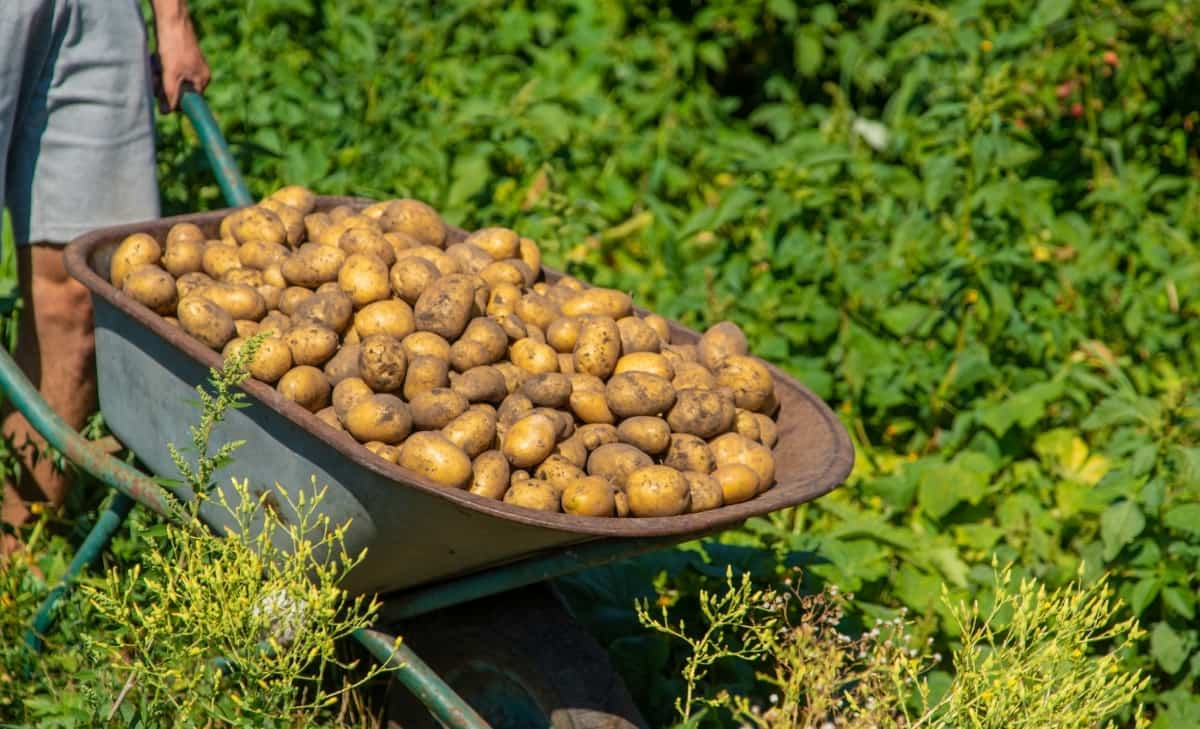Like all types of agriculture, potato farming is a delicate dance between nature and human ingenuity. The global reliance on this staple food makes it crucial to continually implement sustainable farming practices that ensure consistent yields while maintaining soil health. One key practice that stands out in this respect is crop rotation. Here we learn the details of crop rotation, its importance, examples of crop rotation systems suitable for potato farming, and the concept of succession planting potato.

Crop Rotation in Potato Farming
The Importance of Crop Rotation in Potato Farming
Crop rotation is a vital component of sustainable potato farming, involving the cultivation of diverse crops in a specific area during different seasons. This systematic approach of changing the crop type season after season is not arbitrary. It comes with many indispensable benefits for the successful production of potatoes.
The first aspect to consider is soil fertility. Each crop type has specific nutrient demands, which it absorbs from the soil. Potatoes, for example, are especially hungry for potassium and phosphorous. When potatoes are grown in the same field repeatedly, they gradually deplete these essential nutrients, resulting in reduced productivity over time. Farmers can preserve the balance of soil nutrients by rotating potatoes with a crop with different nutrient needs.
Furthermore, crop rotation helps manage diseases and pests. Several pathogens and insects are host-specific; they prefer particular plants and can thrive if those plants are continuously grown in the same place. Potatoes are susceptible to pests and diseases, including Colorado potato beetles, aphids, and diseases like potato blight. Introducing a non-host plant in the next growing season disrupts the lifecycle of these pests and diseases, thus reducing their numbers and damage.
Lastly, crop rotation contributes to the conservation of soil structure and biodiversity. Different crops have varying root structures and growth patterns. Some, like potatoes, are root crops that can help break up compacted soil layers, while others, like beans or peas, can improve soil structure due to their fibrous roots. This natural soil management helps maintain a healthy and biodiverse soil ecosystem, which is the lifeblood of sustainable agriculture.
Crop Rotation Examples in Potato Farming
Having established the importance of crop rotation in potato farming, let’s now delve into examples of effective crop rotation systems. A common crop rotation system involving potatoes is a four-year rotation with cereals and legumes. Here’s an illustrative example:
- Year 1: Potatoes
- Year 2: Barley or another cereal grain
- Year 3: Clover or another legume
- Year 4: Wheat or another cereal grain
In this example, potatoes benefit from the legumes’ nitrogen fixation and the cereal crops’ different nutrient demands. Moreover, the diseases and pests specific to each crop type get less chance to establish and multiply due to the regular change in the host plant. Another crop rotation model involves brassicas, another family of crops that have different nutrient demands and pest pressures than potatoes:
- Year 1: Potatoes
- Year 2: Cauliflower or another brassica
- Year 3: Carrots or another root crop
- Year 4: Beans or another legume
These examples illustrate the strategic thought process behind crop rotation. The choice of crops in the rotation needs to consider the nutrient demands, pest and disease susceptibilities, and soil structure impact of each crop.
In case you missed it: Managing Potato Pests and Diseases Organically

Succession Planting Potato and Crop Rotation
The principle of crop rotation also applies within a single growing season. This is where succession planting comes into the picture, which is essentially a form of crop rotation but applied within a single season. Instead of rotating crops from year to year, succession planting involves rotating crops multiple times within a year. In potato farming, succession planting can play a significant role in maximizing the yield and ensuring a continuous crop supply.
With succession planting, a farmer may plant an early-season variety of potatoes, harvest them, and then plant a late-season variety in the same plot. This allows for two harvests in a year from the same plot. However, ensuring that this intensified potato growing does not compromise soil health is crucial. Here, incorporating green manure crops like legumes between the potato plantings can replenish the soil nutrients.
For example, a farmer may plant early-season potatoes, follow it with a quick-growing legume like cowpea, and then plant a late-season potato variety. In this way, the potatoes benefit from the nitrogen fixation of the legume. The risk of pest build-up is reduced due to the interruption in the continuous potato growing.
But it’s important to remember that succession planting potatoes should be done in combination with crop rotation yearly. The principle of crop rotation still stands: potatoes should not be grown in the same plot year after year, even if different varieties or succession planting is used. Therefore, the crop rotation examples discussed earlier should be incorporated into the farming system along with succession planting.
Soil Testing
Beyond the discussed steps, soil testing is another vital element in crop rotation practice. Regular soil tests provide critical nutrient content, pH level, and soil composition data. This information helps farmers make informed decisions about the types of crops to include in their rotation and when to incorporate organic matter or fertilizer to replenish nutrients.
In case you missed it: Indeterminate vs. Determinate Potatoes: Which One Should You Plant?

For instance, after growing a nutrient-demanding crop like potatoes, a soil test can help decide the subsequent crop or the need for a cover crop to restore soil fertility. Hence, soil testing is an essential step that provides scientific validity to a farmer’s crop rotation strategy, contributing to the optimization of potato farming practices.
Conclusion
Understanding the importance of crop rotation in potato farming can be the difference between sustainable, productive farming and depleting, unproductive farming. From preserving soil fertility to managing pests and diseases to conserving soil structure and biodiversity, the benefits of crop rotation are multifaceted and significant.
Moreover, effective crop rotation systems and the integration of succession planting can amplify these benefits, allowing potato farming to be more sustainable and productive. It is, therefore, essential for farmers, researchers, and policy-makers to understand and promote the use of these age-old yet incredibly effective farming practices. The future of our food system may very well depend on it.
- Feed Your Flock for Less: Top 10 Tips to Save on Chicken Feed
- Ultimate Guide to Ossabaw Island Hog: Breeding, Raising, Diet, and Care
- Hatching Answers: The Top 10 Reasons Your Chickens Aren’t Laying Eggs
- Eggs and Economics: Breaking Down the Cost of Raising Backyard Chickens
- Defend Your Greens: Proven Methods to Keep Iguanas Out of Your Garden
- Ultimate Guide to Cinnamon Queen Chicken: A Comprehensive Guide for Beginners
- Ultimate Guide to California Tan Chicken: Breeding, Raising, Diet, Egg-Production and Care
- Ultimate Guide to Marsh Daisy Chicken: Breeding, Raising, Diet, and Care
- 10 Types of Chicken Farming Businesses You Can Start for Profits